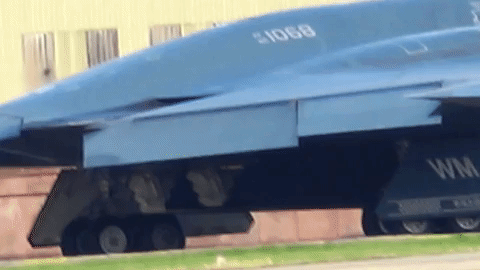This rare video shows how the Northrop Grumman B-2 Spirit’s control surfaces move during checks carried out before taxi.
In March last year, three U.S. Air Force B-2 Spirits, belonging to the 509th Bomb Wing and the 131st Bomb Wing, Whiteman Air Force Base, Missouri, operated from RAF Fairford, UK, as part of Bomber Task Force Europe 20-2 deployment. From there, the stealth bombers carried out a variety of missions across northern Europe, including one that saw the B-2s fly towards the Arctic, over Iceland.
As usual, their stay in the UK also provided a great opportunity for local aviation enthusiasts and spotters to get some cool in-action photos and videos of the tailless aircraft.
To that respect, the clip below is particularly interesting. Posted by “Saint1 Aviation Vids” Youtube channel, that includes many great videos of B-2s, B-52s and U-2s, it shows B-2 #82-1068, “Spirit of New York”, as it carries out pre-flight checks on its control surfaces before departing RAF Fairford. Similar tests are conducted after start-up and during taxi, in order to assess that the surfaces are not obstructed or limited and can freely move.
The video shows the movement of the split rudders and elevons that on the B-2 are installed along the trailing edge of the plane. Since the aircraft has no vertical fin, the split rudders and the elevons are used to control the aircraft rotation along the vertical/yaw axis, whereas pitch and roll are controlled by means of (mid and inboard) elevons. The split-rudders also act as speed brakes.
Unfortunately, the clip doesn’t provide a clear view of the Spirit’s peculiar exhaust and the wedge-shaped flap in the middle of the trailing edge, the GLAS (Gust Load Alleviation System), that looks like the aircraft’s beaver tail and counters the rolling impact or resonance to smooth out the ride of the B-2 in turbulent conditions and extend the aircraft’s fatigue life. Air Force test data finite elemental analysis (FEA) modeling suggest the B-2 will remain structurally sound to approximately 40,000 flight hours. This analysis also revealed that the rudder attachment points at the B-2’s wingtips are the highest structural stress areas and will be the first to fail.









